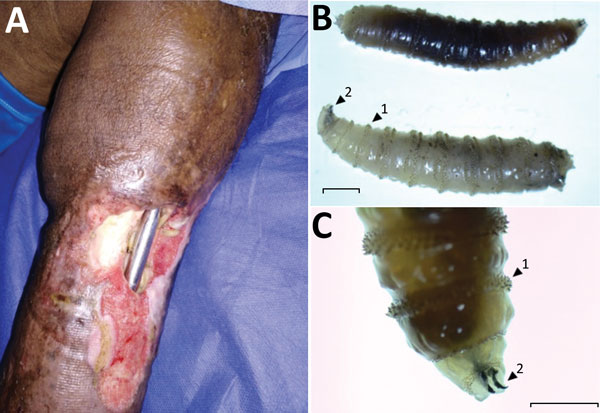Volume 25, Number 2—February 2019
Research Letter
Pin-Site Myiasis Caused by Screwworm Fly in Nonhealed Wound, Colombia
Figure

Figure. Pin-site myiasis in a 77-year-old man 12 years after tibial osteosynthesis, Colombia. A) Open wound in the man’s left leg, showing multiple insect larvae. B, C) Cochliomyia hominivorax screwworm fly larvae extracted from the wound. Arrow 1 indicates the spinose bands; note the spines arranged in 4 rows that separate each segment. Arrow 2 indicates its mouthhooks. Scale bars indicate 2 mm (B) and 1 mm (C).
1These authors contributed equally to this article.
Page created: January 18, 2019
Page updated: January 18, 2019
Page reviewed: January 18, 2019
The conclusions, findings, and opinions expressed by authors contributing to this journal do not necessarily reflect the official position of the U.S. Department of Health and Human Services, the Public Health Service, the Centers for Disease Control and Prevention, or the authors' affiliated institutions. Use of trade names is for identification only and does not imply endorsement by any of the groups named above.